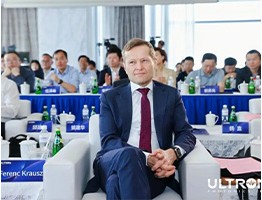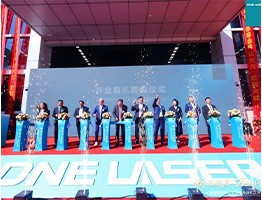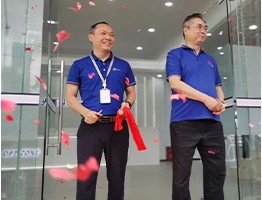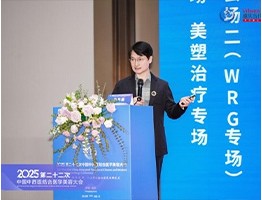Many laser-safety eyewear products do not meet specs for shielding light from ultrafast lasers
source:Laser Focus World
release:Nick
keywords: Ultrafast lasers laser-safety eyewear eye protection
Time:2017-11-30

| Examples of laser-safety eyewear for different laser wavelengths are shown next to some samples submitted for testing. (Image: NIST) |
High-power ultrafast pulsed lasers are used widely for biomedical applications and imaging, materials processing, industrial micromachining and more. But many laser-eyewear products are not tested with ultrafast lasers and may not be providing adequate protection for the technical workers who depend on them.
The main reason for this situation lies in the typical test procedures and standard measurements widely followed by eyewear makers to set their product specifications. Those methods use low-power continuous-wave (CW) light sources. As a result, they do not capture many potential hazards of actual high-power, pulsed-laser working conditions. Moreover, end users only infrequently test how their eyewear performs in particular applications prior to deployment.
Scientists at the National Institute of Standards and Technology (NIST; Gaithersburg, MD and Boulder, CO) and Hood College (Frederick, MD) have published a study of 24 samples of protective filters used in eyewear from five different manufacturers.1 They found that "some of them are good, but some did not perform even close to their own specs when used with ultrafast lasers," says NIST researcher Ted Heilweil.
Ultrafast lasers are not like CW!
In one case, a filter claiming a certain optical density actually provided 10,000 times less light reduction than specified.* Others blocked the specific wavelength for which they were rated, but transmitted much more light at nearby wavelengths.
This happens because, unlike CW lasers, or even nanosecond pulsed lasers, ultrafast laser pulses have a wide spectral bandwidth. But eyewear manufacturers typically do not test their lenses against ultrafast pulsed lasers, or measure how much light they block at wavelengths near the rated wavelength. Indeed, some set their specifications without using laser light at all, relying on standard spectrometers with limited measurement capabilities.
So, the researchers began to investigate how well the filters in protective eyewear performed in stopping light from femtosecond pulses.
Each of the 24 plastic or glass filter samples was rated by its manufacturer to block light at a wavelength of 800 nm. The samples were tested at NIST using a generic ultrafast Ti:sapphire laser with a center wavelength of 800 nm running at 80 MHz and producing 40 fs pulses. The pulses contained wavelengths ranging from 750 to 900 nm.
The researchers discovered that each filter responded differently to various sections of that span; one possible reason, the researchers speculate, is that the lenses may have different formulations of light-absorbing dyes.
For example, one filter that blocked much of the light at 800 nm blocked only one-hundredth as much at 847 nm. Many filters did not meet their own specs when the center wavelength was changed by only 1%. Some lenses were damaged by direct illumination in a few seconds, with results ranging from near transparency to complete opacity. And some performed extremely well across the entire range of wavelengths.
The new study is the first of many that are needed, Heilweil said. "It's more like a startup point. We've just focused on one type of femtosecond laser," he notes. "There are all different kinds, and tunable ones, too."
Manufacturers should test eyewear under specific conditions
Of course, the sorts of high-precision measurements conducted at NIST are not broadly available, and "it is impractical for laser eyewear manufacturers to establish their own femtosecond laser-based test facilities, which cover all possible output conditions of ultrafast systems," Heilweil says. "So, we are trying to encourage manufacturers to use the best possible testing laboratories to evaluate their lenses. At the same time, and equally important, we need to get end users to be more aware of the precise wavelengths their lasers are producing. They need to test their eyewear themselves, in the specific conditions and particular applications for which they will be used, before putting them on."
* The NIST researchers conducted repeated measurements of the optical density (OD) for each sample, often on different days and with different laser power levels. The measured values for a given sample were reproducible to within +/- 20%. OD is a logarithmic scale. Many of the variations in OD that the researchers measured at different frequencies varied in transmission by a factor of 100 or 1000 (OD of 2 or 3) or even more.
 4th Collaboration! What Brought the Global Laser Academic Guru to Chinese Univs & Leading Firms?
4th Collaboration! What Brought the Global Laser Academic Guru to Chinese Univs & Leading Firms? DNE Laser Foshan Smart Manufacturing Base Grand Opening: New Brand Image Starts New Journey
DNE Laser Foshan Smart Manufacturing Base Grand Opening: New Brand Image Starts New Journey Live: DMP GBA Expo – Laser Hard Tech Leads Industrial Smart Manufacturing New Wave
Live: DMP GBA Expo – Laser Hard Tech Leads Industrial Smart Manufacturing New Wave Scientists Develop Palm-sized Short-pulse Laser System: Efficiency Increased to 80%
Scientists Develop Palm-sized Short-pulse Laser System: Efficiency Increased to 80% Global LiDAR Giants Engage in Escalating Patent Wars
Global LiDAR Giants Engage in Escalating Patent Wars
 Shi Lei (Hipa Tech): Focus on Domestic Substitution, Future Layout in High-End Laser Micromachining
Shi Lei (Hipa Tech): Focus on Domestic Substitution, Future Layout in High-End Laser Micromachining Optizone Technology: 17 Years Devoted to Optics – High-Power Optics Mass-Production Pioneer
Optizone Technology: 17 Years Devoted to Optics – High-Power Optics Mass-Production Pioneer Zhuojie Laser: Breaking barriers via tech breakthroughs, aiming to lead high-end light sources
Zhuojie Laser: Breaking barriers via tech breakthroughs, aiming to lead high-end light sources Dr. Sun Linchao: Pioneer and Leader in China's Field of Medical Aesthetic Laser Therapy
Dr. Sun Linchao: Pioneer and Leader in China's Field of Medical Aesthetic Laser Therapy Guo Guangcan, CAS Academician & USTC Professor: Four Decades Chasing Quantum "Light"
more>>
Guo Guangcan, CAS Academician & USTC Professor: Four Decades Chasing Quantum "Light"
more>>
